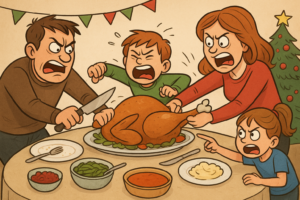Sorry, What Were We Talking About?
 Are attention spans getting shorter?
Are attention spans getting shorter?
I don’t know about you, but I’m seeing less ability to concentrate lately, both in others and in myself. This probably isn’t my imagination. While not conclusive, there’s evidence that attention spans are shortening – or at least people feel like they are.
I’ve observed this as a qualitative researcher. It takes more effort to keep people focused. As a result, I’m shortening focus group and interview duration, conducting smaller groups and breaking conversations into shorter sections. Others in marketing research are seeing this trend as well.
Here’s an interesting question: what do we mean by ‘attention span?’ If you’re looking for a single, agreed-upon definition, forget it – there isn’t one. Cognitive scientists generally see attention as the capacity to concentrate on a stimulus before that focus lapses.
Why are attention spans getting shorter? There’s no definitive answer, but our world now contains increasingly more distractions than it once did. It’s more cluttered and complicated, and we are constantly stimulated by mass and social media. I wrote recently about multitasking, which is practically synonymous with distraction, and there’s evidence that people are trying to do this more.
However you define it– and whatever its origin– this trend presents two challenges: improving our own ability to focus and dealing with distraction in others.
When it comes to improving your own attention span, there’s lots of advice out there, including something called the Pomodoro Technique, cognitive exercises and meditation. The thing that helps me the most is controlling my environment– meaning removing distractions and minimizing interruptions. A change of scenery every few hours also helps me maintain focus. This is why you’ll regularly find me working at one of our many local coffee establishments.
As for the challenge of dealing with short attention spans in others, here are a few tips that work for me:
Manage your own expectations. Realize there’s a limit to how long you can command somebody’s full attention.
Break conversations into short chunks. When conducting qualitative, my practice is that if each party in a conversation has spoken two or three times, it’s time to change the subject. This also works well in social and business contexts.
Control the environment. Limit distractions – don’t try to get somebody to focus when they’re not able to do that. That might mean turning off the TV, going into another room or having everyone put down their phone.
Set goals. If everybody knows exactly what’s on the agenda (such as agreeing on where to have brunch), it will be easy to stay focused until that goal is achieved.
I’ve come to believe that attention is a series of habits. Some habits we need to develop, such as controlling our environment and setting attention goals. Some we need to break, such as always having our phones in our hands and trying to multitask. By paying attention to attention, we can make our world more manageable.
Thanks to Roben Allong, Chris Kann, Jessica Kurth, Abby Leafe, Nancy Ellen Cohn Rich, Rob Riester and Jay Zaltzman for their input on this topic.
Th.e Never-Ending Challenge Of Reinventing Yourself
You can teach old dogs new tricks.
When the plow was invented in Mesopotamia about 6000 years ago, the lives of farmers changed forever. Rather than being subsistence workers, they became part of a complex economic and social system. Those farmers aren’t unique: the world is always changing, and the pace of change keeps increasing.
Throughout history, technology has changed people and the societies around them. In addition to the plow, there’s the printing press, the steam engine, the shipping container and electricity to name just a few. If this topic interests you, check out Richard Currier’s book Unbound, Jared Diamond’s Guns Germs and Steel or Marc Levinson’s The Box.
In my profession, qualitative research, I’ve reinvented myself several times. Since becoming an independent researcher in 1996, I’ve gone through multiple evolutions.
-
In the late 90s I leaned into creative and projective techniques.
-
In 2010 I learned to conduct qualitative online.
-
In 2014 I upped my biometrics game, then added more biometric tools in 2021.
This has required learning new skills and new ways of thinking. Right now the big challenge in my field, as in so many others, is artificial intelligence. The robots are coming, so I’ve embraced AI tools.
I recently conducted research on professional development and learned that adults across a variety of occupations are struggling. They worry about becoming obsolete, and have no idea what to do about it. They are frozen with indecision, unable to move forward.
Adapting to change has always been hard, whether you’re a person, a society or a brand. We evolved in an environment in which things changed slowly, and we’re now in a world where change is rapid and relentless. Adapting requires discomfort and brings risk. However, there are ways to push through.
Think in terms of experiments. Try things, even if you’re doubtful they’ll work. Go for modest changes that can be implemented quickly. If they don’t succeed, try something else. Failure brings knowledge and insight.
Break the task into small steps. Any large, complicated endeavor will seem less daunting if you take it one subtask at a time. Start with one new skill you want to learn and focus on that.
Focus on values, not roles. Try not to view yourself in terms of what you do, but in terms of what you believe and what’s important to you. This will bring clarity to the challenge.
Think in terms of ‘in-between.’ Rather than seeing yourself as immutably being one thing or another, get comfortable with thinking of yourself as being perpetually in a state of transition.
You don’t have to go it alone. There’s a reason we have family and friends: to help us negotiate difficult changes. While some people close to you might not be supportive, you will find people who will stand with you.
Acquiring new knowledge and learning new skills is how we maintain mental health and acuity through life. Not only can old dogs learn new tricks, they really should. So, don’t shrink from change, embrace it. Because we’re always in uncharted territory, and the need to reinvent yourself is eternal.
The Allure of Multitasking.
 Is multitasking just an attractive myth?
Is multitasking just an attractive myth?



